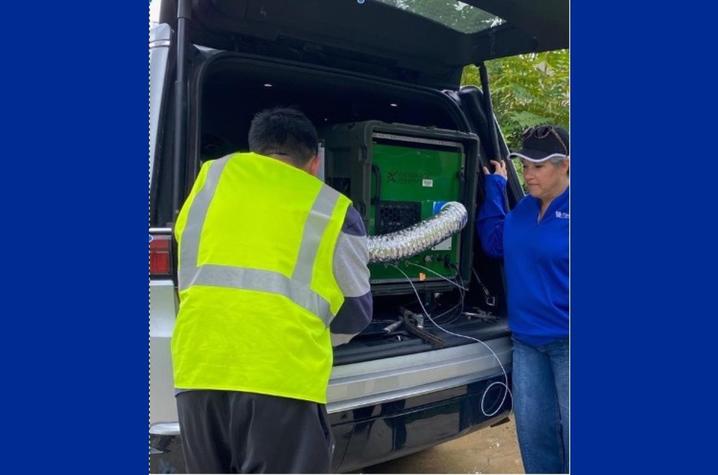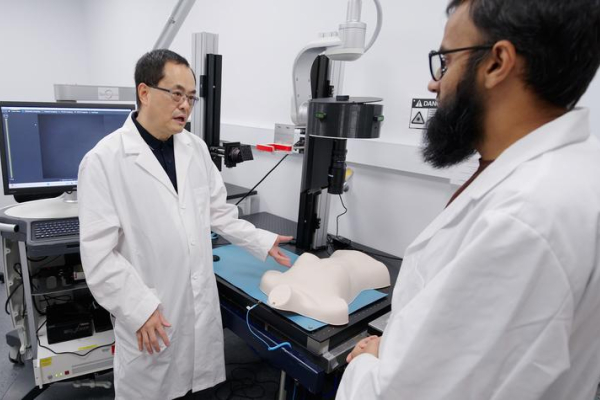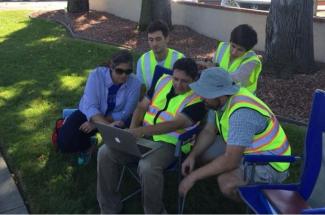UK researchers, Entanglement Technologies use new mobile sensors to track pollution

The demand for accurate chemical monitoring sensors is rising globally, as industries continue to grapple with the legacy of manufacturing waste.
New commercial mobile monitoring platforms can be part of the solution to this rising challenge, provided they meet the same high standards as previous monitoring technology. Industry-academic partnerships are making this possible, advancing state-of-the-art detection science.
Globally, more than 5 billion sites exist that are contaminated with legacy industrial wastes and require remediation before they can be reused and/or redeveloped. Despite recent efforts to change manufacturing practices, the legacy of waste contamination and generation persists.
“Chemical wastes are part of our society,” says Kelly G. Pennell, Ph.D., the Earl Parker Robinson Chair Professor of Environment and Sustainability in the UK Stanley and Karen Pigman College of Engineering.
“The idea of zero-waste is both an aspirational goal and an elusive goal,” said Pennell. “We know that manufacturing ecosystems are being rapidly disrupted. As a result, there will be unintended, unimagined and uneven consequences of industrial waste that impact the health and environment in communities in various geographic locations.”
That’s why Pennell’s team at the University of Kentucky Superfund Research Center, which was funded by the National Institute of Environmental Health Sciences, collaborated with Entanglement Technologies, located in the San Francisco Bay Area, over the past decade to create meaningful solutions to the chemical waste challenge.
A recent study, published in the journal ACS Omega, describes the research team’s quality assurance/quality control (QA/QC) framework to advance the technology readiness-level of mobile chemical monitoring instruments as they become commercially available.
UK graduate student Herman Tay led the work, with Pennell and a leading expert from GSI Environmental Inc., to use Entanglement’s AROMA-VOC sensor — a chemical analyzer — as the model for this QA/QC systematic framework.
“We are excited to be part of such an important collaboration that enables mobile monitoring to grow and fill the gap in characterizing the impact of manufacturing waste on local communities,” said Tony Miller, CEO of Entanglement Technologies. “Our AROMA instruments have evolved to meet the rapidly changing needs of industry and communities worldwide.”
The instrument the research team discussed in this recent publication — AROMA-VOC — has transitioned considerably since Pennell first met Miller to collaborate on a 2016 field study of a superfund site in the San Francisco Bay area.
During the 2016 study, Pennell and Miller maintained close interactions with the U.S. Environmental Protection Agency (EPA), community stakeholders and collaborated with environmental consultants from Clearwater Group and chemical analysis experts at Beacon Environmental.
“The field study provided an opportunity for Entanglement to conduct measurements and make discoveries within the context of a regulated hazardous waste site. The field study with Kelly and her students came at a pivotal time for us. We were transitioning AROMA-VOC towards a mobile design and the field study provided an opportunity to learn in real-time about users’ needs, challenges and opportunities,” said Miller.
Now, AROMA-VOC fits neatly and compactly in the back of a vehicle and can be driven to various locations for chemical monitoring.
Entanglement Technologies has experienced tremendous growth, fueled, in part, by strategic partnerships. Its new mobile technology is used by dozens of groups in the United States — including regulatory bodies conducting air quality monitoring such as the EPA, California Air Resources Board, Colorado Department of Public Health and Environment, industry monitoring fenceline, indoor air and stack emissions, and other universities like Stanford, Baylor and Colorado State. The use of AROMA has even extended overseas and internationally to Canada, the Netherlands and South Korea.
Since 2021, when Entanglement Technologies developed the most sensitive analyzer to measure the critical air toxic ethylene oxide in the ambient environment, the company has outgrown its manufacturing space and significantly expanded its team and operations.
The partnership between Pennell’s team and Entanglement shows how vitally important research collaboration is to the global economy — enabling sustainable growth and innovation across industry sectors.
Research reported in this publication was supported by the National Institute of Environmental Health Sciences of the National Institutes of Health under Award Number P42ES007380. The content is solely the responsibility of the authors and does not necessarily represent the official views of the National Institutes of Health.



